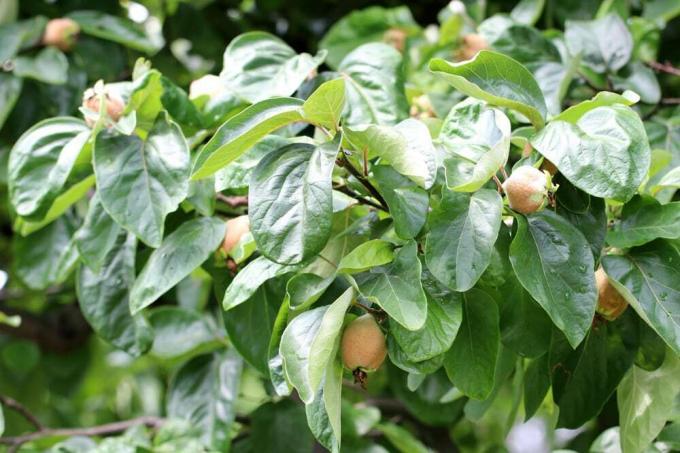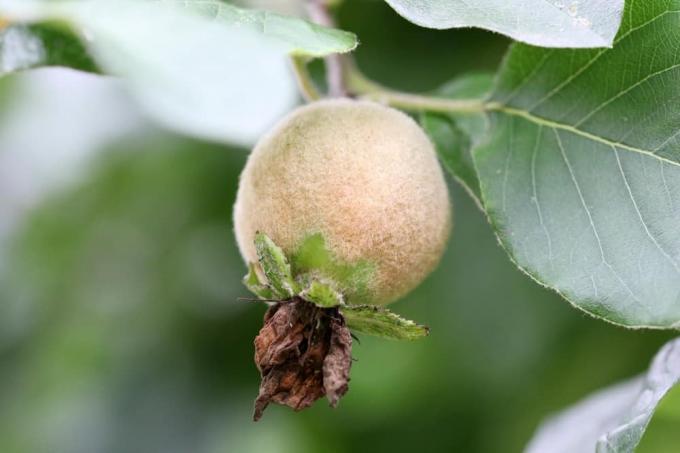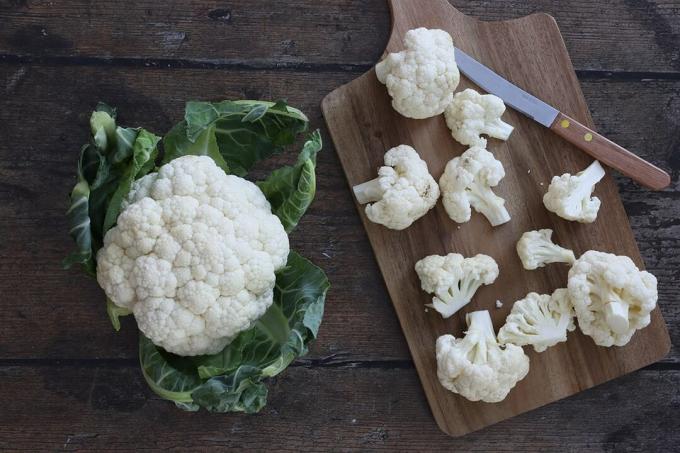

Table of contents
- Recognizing the degree of ripeness of quinces
- The best harvest time
- Harvest right
- Leave to mature during storage
The quince (Cydonia oblonga) from western Asia is a fruit with a very long tradition. Our great-grandparents still appreciated the once very popular fruit. Today it is, wrongly, one of the forgotten types of fruit. The fruits are real all-rounders. They can be used to conjure up tasty jellies, compote, quince bread and many other delicacies. However, quinces are not suitable for raw consumption.
Recognizing the degree of ripeness of quinces
It usually takes between four and eight years for this tree to bear fruit for the first time. But the long wait is definitely worth it. Between May and June, the quince opens its beautiful flowers, which are up to five centimeters in size, and they alone are a splendour. The fruits develop from them by late autumn. Quinces are dull green when unripe.
They are ripe when they turn from a pale yellow to an even, rich and intense yellow. The fine down on the skin has disappeared from ripe fruits, the skin is smooth. The kernels of ripe quinces are dark in color. A pronounced, aromatic scent also indicates a fruit that is ready to be harvested.
The best harvest time
Harvest time does not necessarily describe when Cydonia oblonga needs to be harvested, but rather the length of time that harvest is possible. Quinces are among the last fruits of the year as they only ripen in late autumn. The correct harvest time depends on the respective variety, the weather and whether they are to be processed further shortly after harvesting or stored for a longer period of time.
- Harvest begins when the fruit is about to fully ripen
- Depending on the region, variety and climate, from the end of September to the end of October
- Harvest sometimes even into November
- October is considered a typical harvest month for the quince
- In milder regions, harvest is often possible as early as the beginning of October
- For example in the Palatinate, Baden-Württemberg or in western Bavaria
- Provided the weather cooperates
- Harvest time in the rest of Germany usually in the middle or end of October
- The further north the location, the longer it takes for the quince to ripen
- The cold tends to slow them down
- Quinces that can be stored are neither too early nor too late or harvest too ripe
- The best time to harvest is when the color of the fruit changes from green to yellow
- Can be stored in this state of maturity for up to three months
- If harvested even earlier, the aroma and taste cannot develop
- The typical quince scent of unripe fruits is absent, even when ripening

Fruits that are to be processed immediately after harvesting can be left on the tree or bush remain until they are ripe and golden yellow and have developed their full aroma and typical quince scent have. However, the right time for harvesting should not be missed, because if the quinces are too ripe, they will grow the pectin in the fruit falls off, the flesh turns brown and the taste and aroma become clear after. The last fruits should be harvested before the first long-lasting frosts threaten.
Tip:
If there is enough space in the garden for a second tree, it makes sense to grow both early and late-ripening varieties. In this way you can harvest quinces over a longer period of time.
Harvest right
Quinces Cydonia oblonga should be harvested and transported as gently as possible. This is the only way to avoid bruises and rotten spots that cause the fruit to spoil more quickly. Ripe fruits can usually be easily twisted off the tree. For quinces that are going to be stored, it is important to harvest them with the stalks intact. Fruit with bruises should be processed as quickly as possible, just like fallen fruit.
Leave to mature during storage
At the time of harvest, most of the fruits are not yet fully ripe. If stored correctly, however, they will continue to ripen without any problems. However, only intact fruit should be left to ripen.
- Store harvested, intact fruit in a cool place
- For example in a cellar or frost-free shed
- The longer they mature, the more intense the aroma
- Ensure ideal storage conditions
- Optimum storage temperatures between zero and two degrees
- At these temperatures, quinces can be stored for up to three months
- The higher the temperatures, the faster the fruit spoils
- If stored rather warmly, process the fruit as quickly as possible
- Do not store quinces in the immediate vicinity of other types of fruit
- The intensive aroma of the quinces, easily transferable to neighboring goods
- It would take on the taste of quince
- Do not store quinces lying on top of each other
- Lay them out next to each other in well-ventilated fruit trays or similar containers
- Fruits should not touch each other if possible
- Check quince regularly for damage or rotten spots during storage
- Always sort out and dispose of affected fruit immediately
Tip:
The fridge or the vegetable compartment is only suitable for short-term storage of a maximum of two weeks.
 Home editorial office
Home editorial office
Learn more about storing fruit

Harvesting Boskop apples: when is the harvest time in 2022?
The Boskop (actually "Der Schöne aus Boskoop") is an old apple variety that is still very popular. It is versatile and can be stored for a long time. The right harvest is crucial for a long shelf life. When the time has come in 2022 and what needs to be considered is available here in the guide.

Sloe Liqueur with Rum: Five Recipes | Make sloe fire yourself
A sloe liqueur, also known as sloe fire, is a delicious affair. Typically for everything in winter, it warms the body and mind. It does not necessarily have to be bought ready-made, but can also be easily made yourself. Here are five delicious recipes.

Store cauliflower properly - 6 tips for storage
Cauliflower is one of the most popular foods due to its fine taste and healthy ingredients. Because it's not a typical stored vegetable, proper storage is essential to preserve nutrients and flavor.

Storing Ginger | 7 tips to make the ginger root last longer
Ginger is becoming increasingly popular in our homes as a kitchen spice and natural remedy. The spicy rhizomes can be bought fresh almost everywhere. But so that all valuable ingredients are preserved, it is important to store them correctly after purchase.

Storing & Cellaring Potatoes | 10 tips for storing potatoes
The potato is one of the most traditional vegetables in this country and can hardly be surpassed in terms of culinary variety. Anyone who grows them in their own garden can benefit from a huge variety of varieties and, if stored appropriately, can benefit from them for a long time.

Drying fruit in the oven or microwave? That's how it's done
Dried fruits are not only incredibly tasty, but also healthy and have a very long shelf life. Of course, this is especially true if they come from your own garden. But how do you dry fruit if you don't have a dehydrator but want to use the oven or microwave instead. Everything you need to know is right here.

